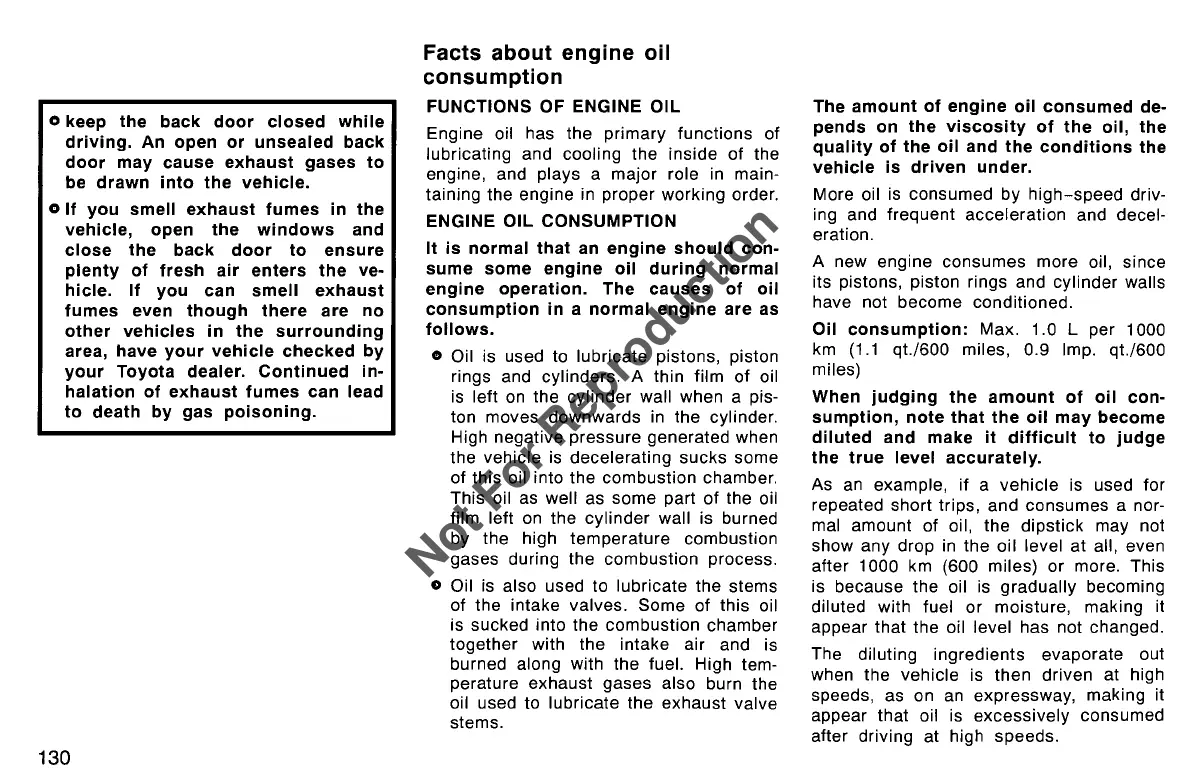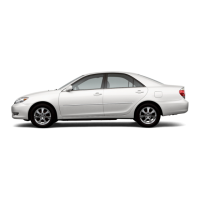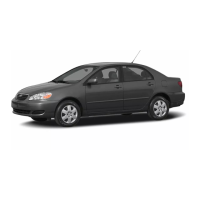o
keep
the
back
door
closed
while
driving.
An
open
or
unsealed
back
door
may
cause
exhaust
gases
to
be
drawn
into
the
vehicle.
o
If
you
smell
exhaust
fumes
in
the
vehicle,
open
the
windows
and
close
the
back
door
to
ensure
plenty
of
fresh
air
enters
the
ve-
hicle.
If
you
can
smell
exhaust
fumes
even
though
there
are
no
other
vehicles
in
the
surrounding
area,
have
your
vehicle
checked
by
your
Toyota
dealer.
Continued
in-
halation
of
exhaust
fumes
can
lead
to
death
by
gas
poisoning.
130
Facts
about
engine
oil
consumption
FUNCTIONS OF ENGINE
OIL
Engine oil has the primary functions of
lubricating and cooling the inside
of
the
engine, and plays a major role in main-
taining the engine in proper working order.
ENGINE
OIL
CONSUMPTION
It
is
normal
that
an
engine
should
con-
sume some
engine
oil
during
normal
engine
operation.
The
causes
of
oil
consumption
in
a
normal
engine
are
as
follows.
• Oil is used to lubricate pistons, piston
rings and cylinders. A thin film of oil
is left
on
the cylinder wall when a pis-
ton moves downwards in the cylinder.
High negative pressure generated when
the vehicle is decelerating sucks some
of this oil into the combustion chamber.
This oil as well as some part of the oil
film left
on
the cylinder wall is burned
by the high temperature combustion
gases during the combustion process.
o Oil is also used to lubricate the stems
of the intake valves. Some of this oil
is sucked into the combustion chamber
together with the intake air and is
burned along with the fuel. High tem-
perature exhaust gases also burn the
oil used to lubricate the exhaust valve
stems.
The
amount
of
engine
oil
consumed
de-
pends
on
the
viscosity
of
the
oil,
the
quality
of
the
oil
and
the
conditions
the
vehicle
is
driven
under.
More oil is consumed
by
high-speed
driv-
ing and frequent acceleration and decel-
eration.
A new engine consumes more oil, since
its pistons, piston rings and cylinder walls
have not become conditioned.
Oil
consumption:
Max. 1.0 L per 1000
km
(1.1
qt.l600 miles, 0.9 Imp. qt.l600
miles)
When
judging
the
amount
of
oil
con-
sumption,
note
that
the
oil
may
become
diluted
and
make
it
difficult
to
jUdge
the
true
level
accurately.
As
an
example, if a
vehicle
is used for
repeated short trips, and consumes a nor-
mal amount of oil, the dipstick may not
show any drop in the oil level at all, even
after 1000
km
(600 miles) or more. This
is because the oil is gradually becoming
diluted with fuel or moisture, making it
appear that the oil level has not changed.
The diluting ingredients evaporate out
when the vehicle is then driven at high
speeds, as on
an
expressway, making it
appear that oil is excessively consumed
after driving at high speeds.

